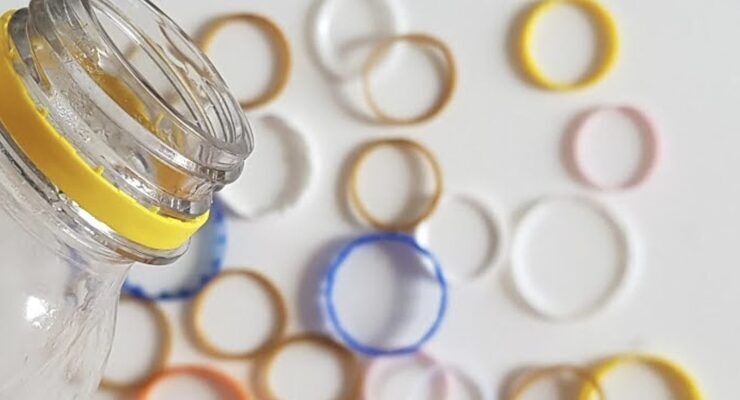ADVERTISEMENT
Many bottles of oil come with a small, spout-like opening to make pouring easier. However, if the spout isn’t controlled properly, oil can pour out too quickly or too much. The seal often fits over the opening to help regulate the flow of oil, so you can pour just the right amount without overdoing it. This feature ensures that you don’t waste any precious oil, giving you more control over your cooking.
Keeping the cap insert intact ensures that the cap itself remains clean. Without the seal, oil could build up on the rim or inside the cap, causing messy residue. This can make the bottle more difficult to clean and might affect the taste of the oil if not properly wiped away. The plastic insert acts as a barrier that prevents oil from touching the cap, making it easier to wipe down and keeping everything neat and tidy.
Other Creative Uses for the Cap Insert:
Apart from its primary function, you might be surprised to know that the small plastic seal has some creative uses beyond just oil bottles. Here are some unconventional ways to repurpose it:
- For Craft Projects: If you’re into DIY projects, you can save those little plastic seals and use them in crafts like creating miniature figurines, jewelry, or adding texture to painted surfaces.
- For Food Storage: If you need a quick solution to store small items like nuts, spices, or small herbs, you can use the plastic seal to cap off tiny containers. It creates an airtight seal to help keep the contents fresh.
- As a Non-Slip Base: Place the plastic seal under small jars or containers to give them extra grip, preventing them from sliding around on smooth countertops or tables.
How to Properly Store Your Oil to Maintain Freshness:
While the cap insert does its job to help preserve your oil, there are a few more things you can do to extend its shelf life:
- Keep It in a Cool, Dark Place: Store your oil away from direct sunlight and heat. Light and high temperatures can cause the oil to spoil faster. A pantry or cupboard is the best place for oil storage.
- Seal the Cap Tightly After Each Use: Always ensure the cap is securely closed after each use, so air doesn’t get inside. The plastic seal will help with this, but double-checking can never hurt.
- Avoid Storing Oil Near Strong Odors: Oil is highly susceptible to absorbing odors, so keep it away from items like cleaning supplies, spices, or strong-smelling foods.
- Use Within the Recommended Time: Different oils have different shelf lives, but generally, most oils last between 6 to 12 months. If you’re unsure, always check the expiration date on the bottle, and if the oil smells rancid or off, it’s time to toss it.
Conclusion:
Next time you open a new bottle of oil, take a moment to appreciate the small plastic insert inside the cap. Instead of throwing it away, keep it in place to help preserve the freshness, prevent spills, and ensure your oil lasts longer. Not only does this simple part play an important role in maintaining the quality of your oil, but it can also be used in various creative ways if you feel like repurposing it!
By taking care of your oil bottle—and never discarding that small, often-overlooked piece—you’ll keep your kitchen cleaner, your cooking more efficient, and your oil fresher for longer. Happy cooking!
ADVERTISEMENT
ADVERTISEMENT
